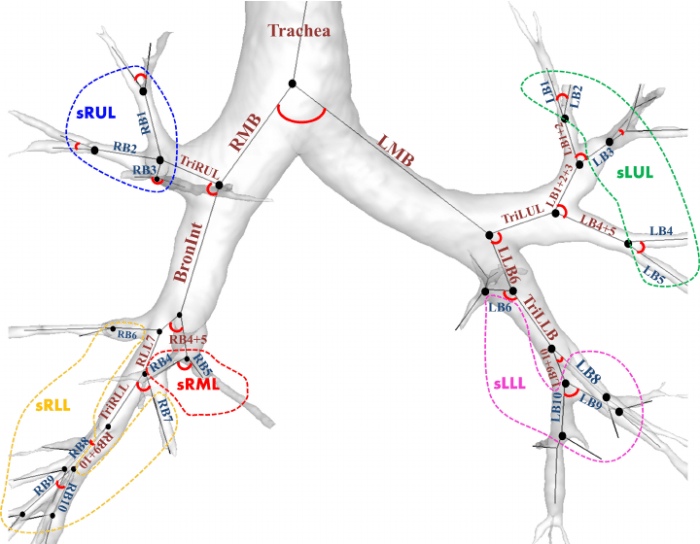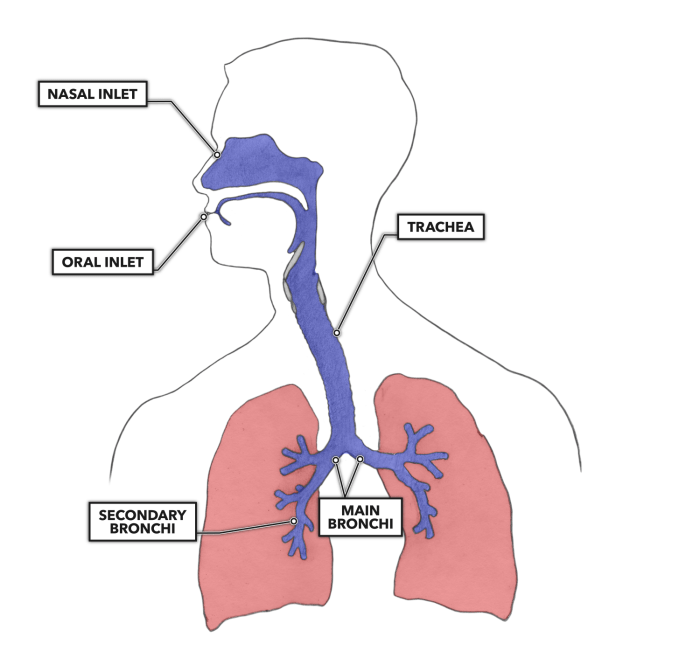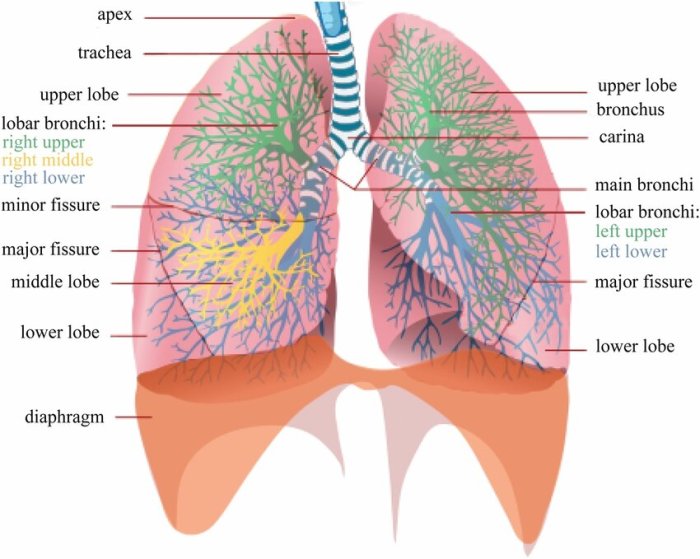Label the large airway segments indicated in the figure – Labeling the large airway segments indicated in the figure is a crucial aspect of understanding the anatomy of the respiratory system. This guide provides a comprehensive overview of the topic, covering the trachea, main bronchi, lobar bronchi, and segmental bronchi.
By understanding the location and significance of these airway segments, readers will gain a deeper appreciation for the complexities of the respiratory system.
Introduction

Accurately labeling large airway segments is crucial for proper understanding of the respiratory system and effective diagnosis and treatment of respiratory conditions. The figure provided serves as a valuable tool in facilitating the labeling process.
Labeling the Trachea
The trachea, also known as the windpipe, is a cylindrical structure that extends from the larynx to the carina. To label the trachea in the figure, identify the following features:
- Locate the tube-like structure extending from the larynx downwards.
- Identify the cartilaginous rings that reinforce the trachea’s walls.
- Label the smooth muscle tissue that surrounds the cartilaginous rings.
Labeling the trachea is essential for understanding its role in transporting air between the larynx and the lungs.
Labeling the Main Bronchi, Label the large airway segments indicated in the figure
The main bronchi are the two primary branches of the trachea that enter the lungs. To label the main bronchi in the figure, identify the following:
- Locate the point where the trachea divides into two branches.
- Identify the right main bronchus extending towards the right lung.
- Label the left main bronchus extending towards the left lung.
Distinguishing between the right and left main bronchi is crucial for comprehending the anatomy of the respiratory system.
Labeling the Lobar Bronchi
The lobar bronchi are the branches of the main bronchi that supply air to the different lobes of the lungs. To label the lobar bronchi in the figure, identify the following:
- Locate the right main bronchus and identify its three branches: the right upper lobar bronchus, the right middle lobar bronchus, and the right lower lobar bronchus.
- Identify the left main bronchus and its two branches: the left upper lobar bronchus and the left lower lobar bronchus.
Understanding the relationship between the lobar bronchi and the different lobes of the lungs is essential for accurate diagnosis and treatment of respiratory conditions.
Labeling the Segmental Bronchi
The segmental bronchi are the smallest branches of the bronchial tree that supply air to individual lung segments. To label the segmental bronchi in the figure, identify the following:
- Locate the lobar bronchi and identify their further divisions into segmental bronchi.
- Label the segmental bronchi according to the lung segment they supply, such as the apical segmental bronchus, the posterior segmental bronchus, and the lateral segmental bronchus.
Identifying the segmental bronchi is clinically significant as it allows for targeted interventions during bronchoscopy and other respiratory procedures.
Key Questions Answered: Label The Large Airway Segments Indicated In The Figure
What is the significance of labeling the trachea?
Labeling the trachea is important because it allows us to identify its location and relationship to other structures in the neck and chest. This knowledge is essential for understanding the pathway of air as it enters and exits the lungs.
How do we distinguish between the right and left main bronchi?
The right main bronchus is wider and shorter than the left main bronchus. Additionally, the right main bronchus gives rise to three lobar bronchi, while the left main bronchus gives rise to two lobar bronchi.
What is the clinical significance of identifying the segmental bronchi?
Identifying the segmental bronchi is important for surgical procedures, such as lung resection. By knowing the location and anatomy of the segmental bronchi, surgeons can accurately target specific areas of the lung for removal.


